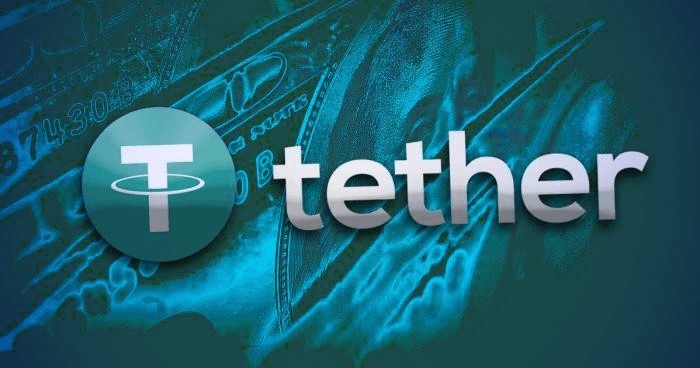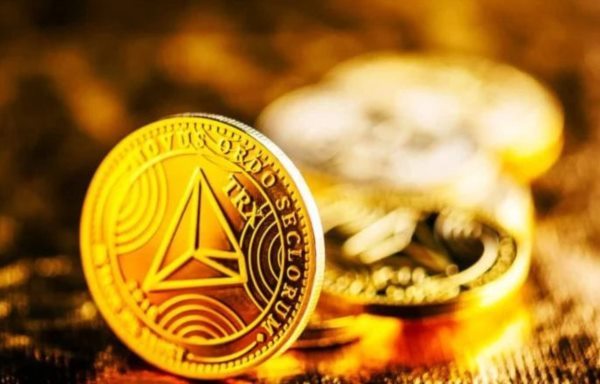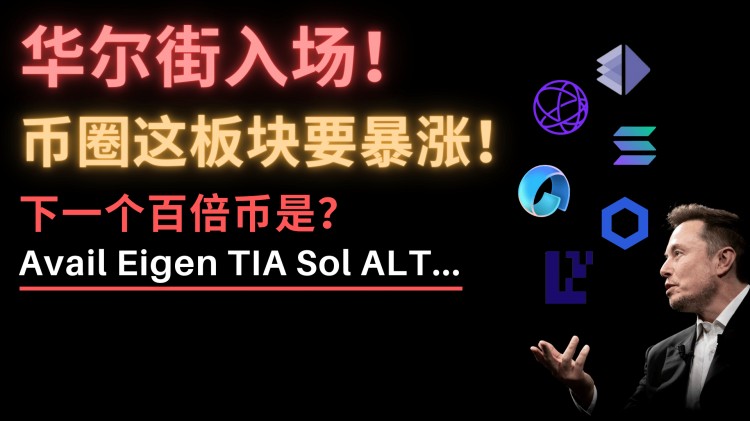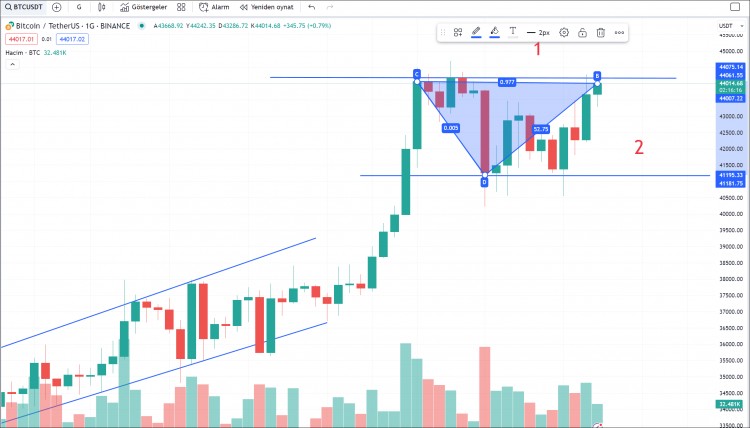时间:2024-02-25|浏览:332
Original title: Analysis of excerpts from Satoshi Nakamoto’s early remarks and email history
Original author: Rizzo, BitcoinMagazine editor
Original source: twitter
Compiled by: Odaily Planet Daily How is your husband?
With the approval of Bitcoin spot ETF, Bitcoin is gradually being accepted by the mainstream world. Looking at the continuous inflow of funds every day, I can’t help but recall the difficulties faced when Bitcoin was born. However, the boat has passed through thousands of mountains, and now Bitcoin even Does the development of the crypto world conform to the vision of its creator Satoshi Nakamoto? Did Satoshi Nakamoto have any hidden reasons for leaving without saying goodbye?
Perhaps the analysis of excerpts of Satoshi Nakamoto’s early remarks and email history can help clear up your confusion. Thanks to BitcoinMagazine editor Rizzo for analyzing and intercepting part of the historical records, so that Satoshi Nakamoto’s will can be reproduced in the encryption world.
Odaily Planet Daily compiles the key points of email history for everyone based on the thread published by Rizzo on the X platform.
Before the release of Bitcoin, academic discussions between Satoshi Nakamoto and Adam Back
1. The picture below shows the first email record between the two parties (in 2008). Satoshi Nakamoto quoted Adam Back’s notification letter about the Hashcash paper. From the content point of view, those who are familiar with the Bitcoin white paper should be able to find that most of the content in the article is the summary of the Bitcoin white paper.
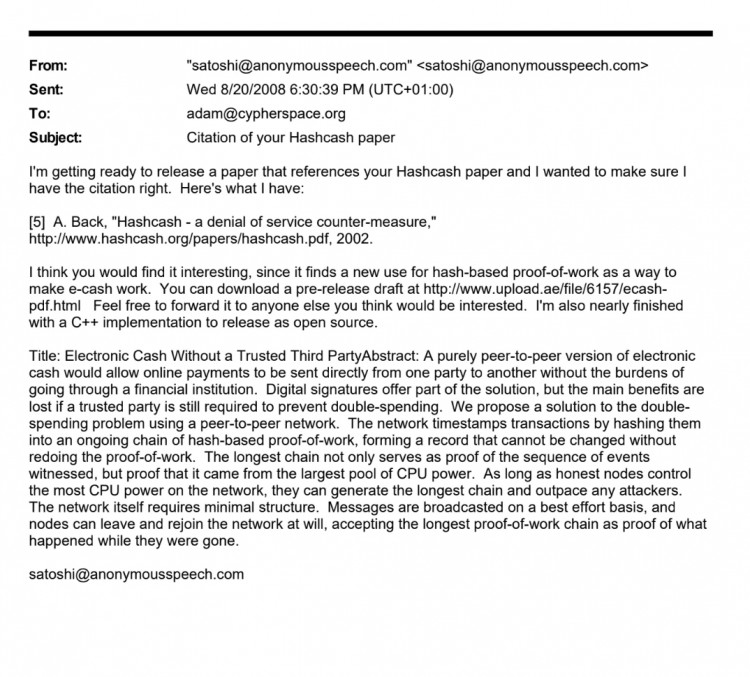 Subsequently, the two parties discussed academic issues:
Subsequently, the two parties discussed academic issues:
2. Adam Back replied to Satoshi Nakamoto and suggested that Satoshi Nakamoto should read Wei Dai’s “B-money” paper. (Rizzo's note: Dei is a well-known cryptographer who is dedicated to the research of digital cash and is often mentioned as a possible candidate for Satoshi Nakamoto.)
3. Satoshi Nakamoto wrote back to thank Adam Back and stated that he had not read the "B-money" paper. He also explained that the main innovation of Bitcoin is to simultaneously use proof of work to support a distributed timestamp server. When users generate proof of work to mint new cryptocurrencies for themselves, that same proof of work also supports network timestamping. This replaces Usenet.
4. Adam Back wrote back to Satoshi Nakamoto and apologized for not having read Satoshi Nakamoto’s paper. At the same time, Adam also mentioned: “Another related paper was written by Rivest et al., called micromint, which uses k-way Collision to create tokens for banks provides a computational advantage over time. Your mention of a certain group of players gaining an advantage through computational cycles reminds me of micromint. In micromint, over time, The bank’s advantage increases as there is an accumulation of advantages in the accumulation of partial results, which helps create further partial collisions more cheaply.”
5. Satoshi Nakamoto wrote back again to thank Adam Back for his help and for providing Wei Dai’s “b-money” paper and other information. And said that the open source code related to the paper has been released and is called Bitcoin v 0.1. And gave the link and screenshot to Adam, and introduced that the main idea of the system is to create a self-proof consensus by generating a series of hash-based proofs of work. Users earn new cryptocurrencies by contributing proof of work to the chain. (Rizzo’s note: According to Adam’s public statements, he didn’t pay attention to Bitcoin again until late 2012.)
Odaily Note: The above email history between Adam Back and Satoshi Nakamoto is complete. Adam may have only regarded Satoshi Nakamoto as a person seeking knowledge at that time, and never thought that Bitcoin would become one of the top 10 assets in the world in the future.
Questions and answers after the release of Bitcoin, email exchanges between Satoshi Nakamoto and early collaborator Martii 'Sirius' Malmi
1. Satoshi Nakamoto looked for collaborators, and Martii became an early partner of Bitcoin. The picture below shows the first email between Satoshi Nakamoto and Martii. In the original text, Satoshi thanked Martii for opening the topic on ASC and praised his very accurate understanding of Bitcoin. And indicated the main direction of Bitcoin at present, hoping that Martii can create a website on Sourceforge and manage the collection of Bitcoin FAQs. Satoshi Nakamoto also said that he can provide Martii with some information, facts and ideas when responding to questions in emails and forums. compilation.
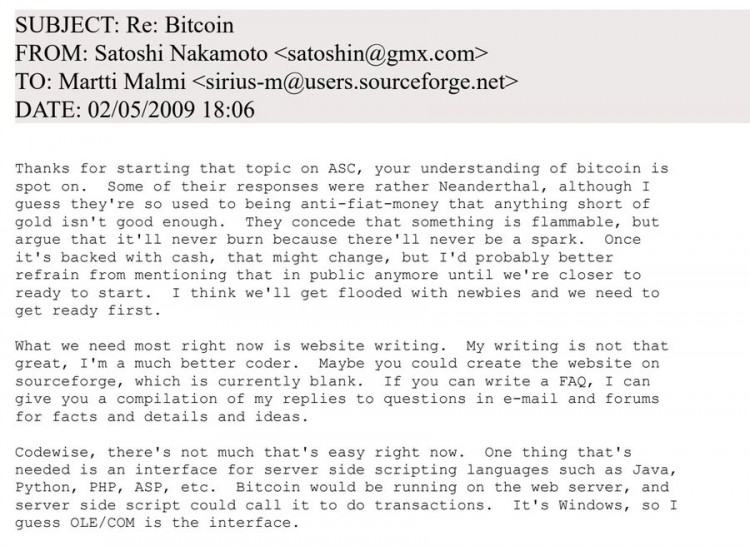
2. When Satoshi Nakamoto was asked about how Bitcoin should expand in the future, Satoshi Nakamoto’s answer was: the Bitcoin network will have a maximum of 100,000 nodes, and the calculation and discussion will be based on the situation at that time. Economics of scaled networks. (Rizzo’s note: There are currently approximately 50,000 nodes running the Bitcoin client.)
The picture below shows what Satoshi Nakamoto said.
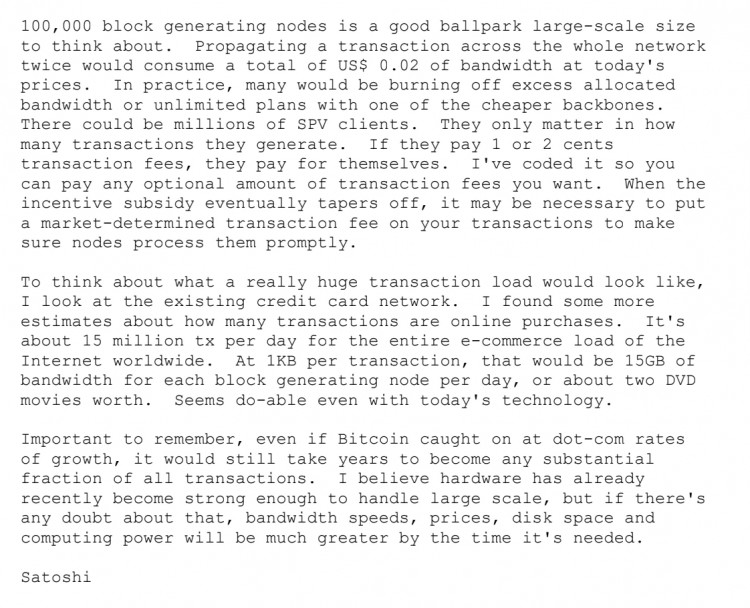
3. Satoshi Nakamoto believes that Bitcoin mining will consume less energy than the traditional banking system. You can admire Satoshi Nakamoto’s foresight through the original text below:
The original text is “Ironically, we may eventually have to choose between economic freedom and environmental protection. Unfortunately, the only solution I have found is Proof of Work (POW). Proof of Work is essential for coordinating the network and preventing double spends. Crucial. Proof of work is key to enabling peer-to-peer electronic cash systems to work without trusting a third party.
Even if energy consumption increases to considerable levels, I think it will still be more frugal than the labor and resource intensive activities of traditional banking activities. It would cost far less than the billions of dollars in bank fees required to pay for all those bricks and mortar buildings, skyscrapers, and spammy email credit card offers. "
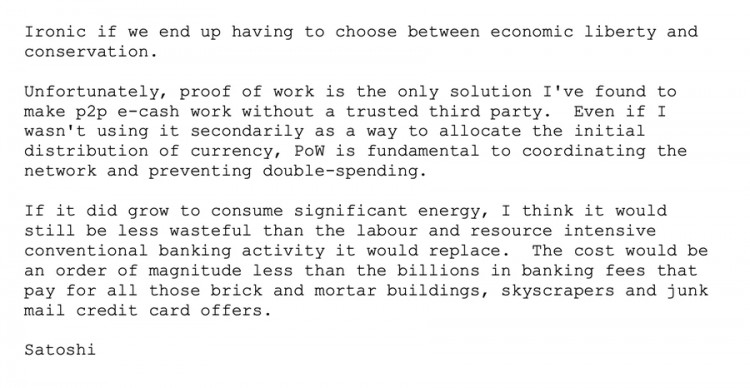
4. Satoshi Nakamoto foresaw at least one viable non-monetary use for Bitcoin, supporting timestamping use cases.
The original text is "Some people were talking about secure timestamping the other day. You want to be able to prove that a certain file existed at some time in the past. In my opinion, Bitcoin's blockchain is very suitable for this purpose. Bitcoin is a distributed secure timestamp server, a few lines of code can create a transaction with an additional hash, the hash can be used to timestamp anything needed. I should add a command to add files this way timestamp."
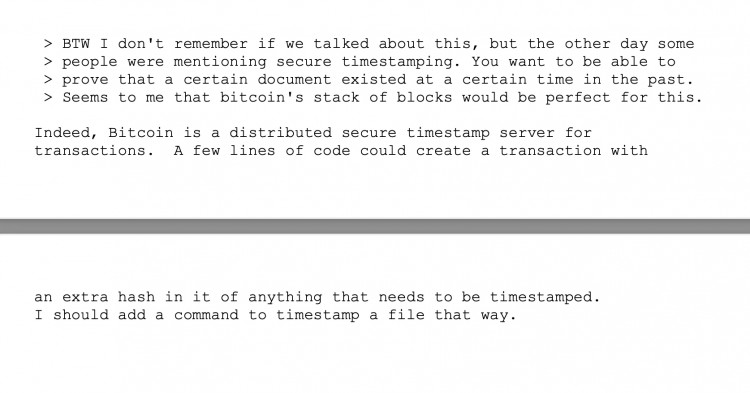
5. Satoshi Nakamoto describes the differences between Bitcoin and David Chaum’s failed electronic currency DigiCash. (Rizzo’s note: It’s worth noting that Chaum’s comments had a profound impact on cypherpunks, including Hal Finney.)
The original text is "DigiCash is similar to using digital signatures to represent currency, but differs in terms of privacy protection and preventing double spending. The recipient of a Bitcoin payment is able to check whether it is the first payment, and if not, the second payment is not accepted. No There is an offline mode for later catching and exposing double spenders as this would require the identity of the participants. To protect privacy, the key pair is only used once and a new key pair is generated with each transaction. The owner of the currency Is the person who holds their private key. Of course, the big difference is that there is no central server. This is the Achilles heel of the Chaumian system, when the central company shuts down, the currency shuts down with it. In Bitcoin, the supply of currency is limited . The total amount will be 21, 000, 000 coins. The transaction simply transfers ownership.”
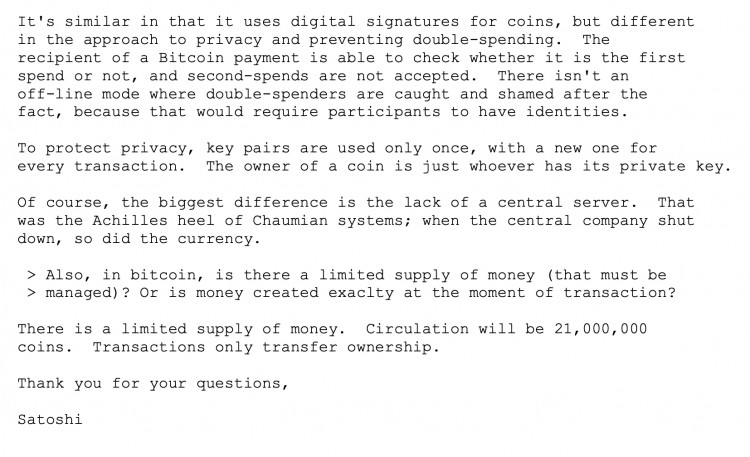
6. Satoshi Nakamoto expressed resistance to labeling Bitcoin as an "investment", worried about legal risks, and urged Martii to delete the corresponding remarks. (Rizzo's note: As can be seen in the original article, the term "cryptocurrency" was not the first term that Satoshi Nakamoto came up with.)
Original article: "There are a lot of things you can say on the SourceForge site that I can't say on my own. Even so, I don't feel comfortable saying explicitly 'consider it an investment.' That's a dangerous statement. , you should delete this project. If they come to this conclusion on their own, that's fine, but we can't market it as such; someone came up with the term 'cryptocurrency', and maybe we should use that when describing Bitcoin Ci, what do you think?"
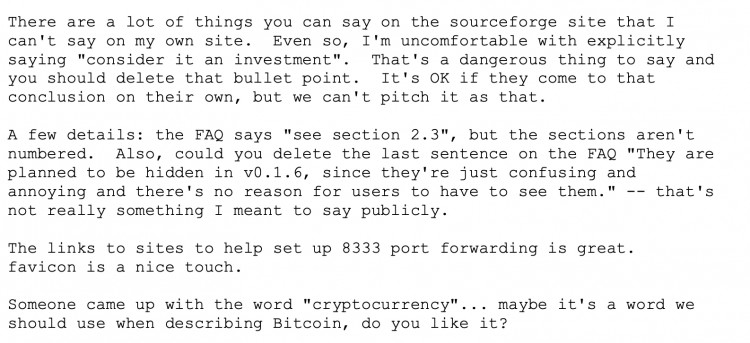
7. In July 2009, after 18 months of development, Satoshi Nakamoto felt tired and needed a rest. The article also mentioned Hal’s absence from work.
Original text: "Hal has helped me a lot on cryptography forums and defended the design, but is not currently actively involved. He did initial testing of Bitcoin when it was first released. He used it many years ago with his reusable Proof of Work (RPOW) has contributed a lot to the field. I can’t help much right now, I’m very busy and I need a break after 18 months of development.”
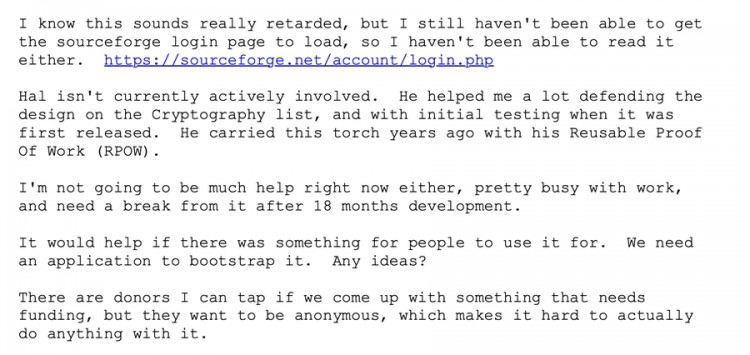
8. Rizzo’s interpretation here feels biased. Rizzo’s interpretation is that Satoshi Nakamoto discussed ways in which Bitcoin may be adopted. Notably, he emphasized the fact that Bitcoin is easy to obtain because you can mine it on your computer. This is very different from how we view Bitcoin today.
Based on the original text, the author believes that what Satoshi Nakamoto wants to express is that Bitcoin is easy to obtain at first, but as scarcity and value increase, it becomes more difficult to obtain Bitcoin, which echoes the current reality.
Original text: “Offering currency to back Bitcoin will attract free seekers, which will have a lot of publicity benefits. Initially, it will be seen primarily as a way to earn free currency for your computer’s idle time. Perhaps it could be promoted as helping Support the future of e-commerce and make some revenue during computer idle cycles. Word will spread exponentially as people cash out and actually get paid. Might help keep the minimum transaction amount above what a typical user can rack up , so that users must trade with each other in order to collect enough amounts to cash out. Aggregators (the prototype of the original exchange) will set up small exchange shops, which will increase users' confidence in exchanging Bitcoins and have more buyers to choose from. Initially, people are skeptical about getting the currency for free, but as competition increases the difficulty of proof of work, Bitcoin's scarcity should become apparent. People will realize that they can't just get all the Bitcoin they want. This will Establish a minimum value for Bitcoin so that it can be used for other purposes that are waiting to be used if there is hope.”
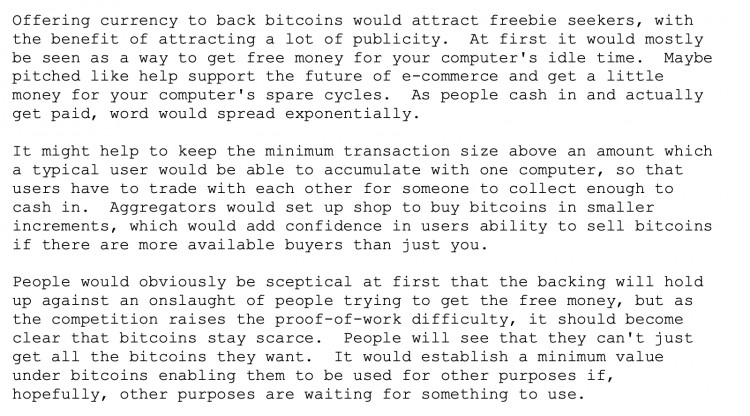
9. Satoshi Nakamoto received a donation request from others, but Satoshi Nakamoto transferred the amount to Martii.
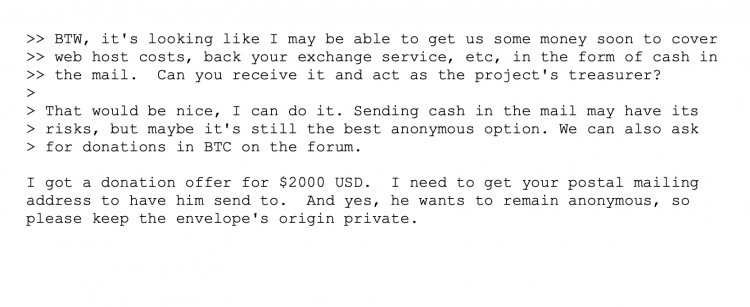
10. Satoshi Nakamoto believed that Bitcoin would become a way to trade other Internet currencies such as Liberty Reserve. (Rizzo’s note: Liberty Reserve was later closed by the United States.)
Original text: “Exchanging for Liberty Reserve is also an option. It is an online currency similar to e-Bullion, Pecunix or Webmoney that allows transactions without questions and with privacy. Buying Liberty Reserve and other currencies is difficult because Exchangers are very cautious and worried about being cheated by reverse payments, so they require more details and holding time. And cashing out is very easy. Liberty Reserve is irreversible, so there are many exchangers rushing to convert it to any Payment method. In contrast, it is very easy to obtain Bitcoin through mining. Customers can easily exchange Bitcoin for Liberty Reserve and then for cash, gold, PayPal, or they just want to save the money, then Just exchange your Bitcoin for Liberty Reserve.
Additionally, BTC 2 PSC proposes the idea of selling Bitcoins as paysafecards. Online delivery can be done by emailing the card number, or physical, unopened cards can be delivered by mail. There are many different variations. In some countries, they are called gift cards and can be used wherever credit cards are accepted. Some people can't get a real credit card because they don't have a credit history, so they buy their own gift cards to pay for things that require a credit card. "
11. Satoshi Nakamoto removed the word “anonymous” from the Bitcoin website because he thought it sounded shady.
Original article: “I think we should tone down the emphasis on anonymity. With the popularity of Bitcoin addresses, we cannot give the impression of automatic anonymity. If someone digs deep into transaction history and starts exposing information that people think is anonymous, Had we not been warned ahead of time that precautions had to be taken, the consequences would have been much worse. As Tor says, 'Tor doesn't encrypt all of your internet activity like magic. Understand what Tor does and doesn't offer you.' Also, anonymity sounds a little fishy. I think those who want anonymity will figure it out on their own and we don’t have to make a big deal about it.”
12. Satoshi Nakamoto admired Gavin and recognized his development capabilities. (Rizzo’s note: It’s worth noting that Satoshi Nakamoto was very complimentary of Gavin Andresen, given the historical revisionism surrounding this event)
13. Satoshi Nakamoto hopes to put Martii’s name on the developer list of the Bitcoin website, emphasizing that it must be the real name. (Rizzo's note: I finally saw a copy of the email that Satoshi Nakamoto sent to other developer lists before he removed his name from the project website. Satoshi did not mention his intention to withdraw from the project in the email. )
热点: THE

